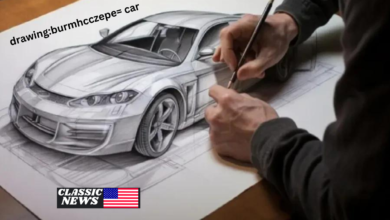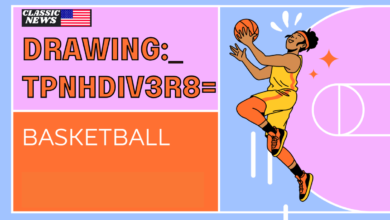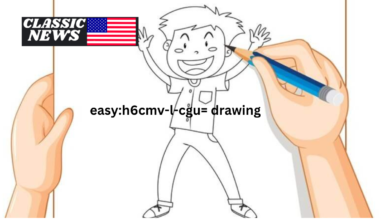Exploring the Art of drawing:plcxcsjeqpq= mushroom: Everything You Need to Know
If you’re a budding artist or simply love nature, drawing mushrooms can be a fascinating, unique subject to explore. From their unusual shapes to intricate textures, mushrooms offer endless possibilities for artistic expression. Whether you’re interested in realistic sketches, cartoonish fungi, or fantastical designs, this guide on drawing
Drawing:plcxcsjeqpq= mushroomwill inspire you to pick up a pencil and get creative.
In this article, we’ll take an in-depth look at mushroom drawing, covering techniques, styles, and creative ideas to help you bring these interesting fungi to life on paper. Whether you’re a beginner or an experienced artist, there’s something here for everyone.
Why Draw Mushrooms?
Mushrooms have an amazing variety of shapes, sizes, and colors, making them an artist’s dream. Here are a few reasons why drawing mushrooms can be an enjoyable and rewarding artistic pursuit:
- Unique Shapes: From tall and skinny to short and round, mushrooms come in many shapes, offering diverse forms to draw.
- Natural Patterns: Many mushrooms feature interesting textures, gills, and patterns that can help improve your drawing skills.
- Imaginative Designs: Mushrooms are great for creative freedom. You can draw them realistically or use your imagination to add fantasy elements.
- Connecting with Nature: Drawing mushrooms can make you more appreciative of the natural world, helping you notice details you might otherwise overlook.
If you’re looking to build your drawing skills, mushrooms are a great subject to explore, providing a blend of challenge and creative freedom.
Getting Started with Mushroom Drawing
Before diving into advanced techniques, let’s start with the basics. All you need to begin drawing mushrooms are a few simple materials and some basic knowledge of mushroom shapes and textures. Here’s how to get started.
Basic Materials
- Pencil: A good quality pencil, preferably HB or 2B, for sketching outlines.
- Eraser: Essential for cleaning up lines and making corrections.
- Paper: Any sketchbook or drawing paper with a slight texture will work well.
- Colored Pencils or Watercolors: If you want to add color to your drawings, colored pencils or watercolors can be great options.
- Reference Images: Having some pictures of mushrooms will help you capture realistic details.
Observing Mushroom Shapes and Patterns
There are countless mushroom varieties, each with unique characteristics. Here are some popular mushroom shapes to get familiar with:
- Cap and Stem: The classic mushroom shape with a rounded cap and central stem.
- Bell-shaped: Mushrooms with a bell or dome-shaped cap, often seen in wild varieties.
- Flat and Wide: Mushrooms with a flat, wide cap, like the commonly known portobello.
- Clustered Mushrooms: These grow in groups, which can make for an interesting drawing composition.
Observe these shapes and textures in real mushrooms or photos before starting your drawing.
Drawing
= Mushroom Styles
With the basics down, let’s explore some popular styles for drawing
= mushroom. Whether you prefer realistic sketches or stylized illustrations, there’s a mushroom drawing style for everyone.
Realistic Mushroom Drawing
If you’re aiming for a realistic drawing, pay close attention to details. Here’s how to approach it:
- Start with Light Outlines: Begin with a light outline of the mushroom cap and stem. Realistic drawing focuses on precision, so don’t press too hard.
- Add Texture: Mushrooms often have unique textures on their caps, such as bumps or spots. Use light shading and fine lines to create these textures.
- Focus on Shadows and Highlights: To make the mushroom look three-dimensional, pay attention to shading. Add shadows on the underside of the cap and lighter areas where light hits the mushroom.
Cartoon Mushroom Drawing
A cartoon-style mushroom is great for kids or beginners who want something fun and less detailed.
- Simple Shapes: Use rounded, exaggerated shapes. Cartoon mushrooms often have larger caps and shorter stems.
- Add a Smile: Adding a face, like eyes and a smile, can make the mushroom character more lively.
- Bright Colors: Cartoon mushrooms usually have bold, unrealistic colors, like red or blue, for a playful effect.
Fantasy Mushroom Drawing
If you’re feeling creative, why not turn your mushroom drawing into a fantasy scene? Mushrooms are common in magical illustrations, often as glowing or oversized versions. Try these fantasy elements:
- Glow Effect: Add a glow around the mushroom cap or stem to give it a magical appearance.
- Unusual Shapes: Draw tall, spiraled stems or oddly shaped caps to give it a mystical look.
- Background Details: Consider adding forest creatures, tiny fairy lights, or sparkling particles around the mushroom.
Tips for Drawing Different Parts of a Mushroom
Mushrooms may look simple, but drawing them realistically or artistically requires a close look at their distinct parts. Here’s a breakdown of each part and tips on how to draw them.
Mushroom Cap
The cap is the most noticeable part of a mushroom. Here’s how to capture it effectively:
- Curved Lines: Start with the general shape, using a curved line for the cap. Vary the shape depending on the mushroom type.
- Add Texture: Some caps are smooth, while others have ridges or scales. Light strokes and gentle shading will help add texture.
- Shadow Underneath: To give depth, add shading along the bottom edge of the cap, especially where it meets the stem.
Mushroom Stem
The stem supports the cap and can be thick or thin, straight or wavy. Follow these steps for drawing the stem:
- Basic Outline: Draw a simple line for the stem shape, adjusting the thickness based on the mushroom type.
- Curved Sides: Most stems are cylindrical, so draw slight curves on each side.
- Shading for Depth: Lightly shade one side of the stem to make it appear three-dimensional.
Gills
Gills are the tiny rib-like structures beneath the cap. They can be challenging but are essential for realistic drawings.
- Start from the Center: Draw thin lines from the center of the cap toward the edges.
- Vary the Lines: Some gills are closer together, while others are more spaced out. Create texture by adjusting the spacing.
- Add Shadow: A little shading between the gills will give depth and realism to this area.
Creative Ideas for Mushroom Drawings
Ready to get more imaginative? Here are some creative ideas to make your drawing
= mushroom unique and interesting.
A Mushroom in a Forest Scene
Place your mushroom in a natural setting by adding background elements like leaves, grass, or other mushrooms. This gives the drawing context and makes it more visually appealing.
Animal Mushrooms
Combine mushrooms with animals for a fun twist! Draw a mushroom cap as a hat for a woodland creature or add tiny animals perched on a mushroom stem.
Seasonal Mushroom Drawings
Draw mushrooms that reflect different seasons. You could create winter mushrooms with snowy caps, or spring mushrooms surrounded by fresh flowers.
Techniques for Shading and Coloring
Shading and coloring add depth and interest to your drawing
= mushroom. Here are some techniques:
Pencil Shading
- Cross-Hatching: For texture, use cross-hatching (intersecting lines) on the cap and stem.
- Gradient Shading: Gradually increase pressure on your pencil for a gradient effect, which is perfect for rounded surfaces like caps.
- Blending: Use a blending stump or your finger to smooth out pencil marks.
Coloring with Colored Pencils
- Layering Colors: Start with light colors and layer darker tones on top. For example, use light brown for the base of the cap and add darker browns for shading.
- Mix and Match: Combine multiple colors, like reds and oranges, for vibrant, fantasy mushrooms.
Table: Common Mushroom Types and Their Drawing Characteristics
| Mushroom Type | Shape Characteristics | Texture or Color | Tips for Drawing |
| Fly Agaric | Rounded, bright red with white dots | Smooth, bold spots | Exaggerate color for a cartoon style |
| Portobello | Wide, flat cap, thick stem | Darker brown, smooth texture | Add shadows to emphasize the cap |
| Shiitake | Small, round cap, narrow stem | Brown with fine gills | Fine details for gills |
| Morel | Tall, honeycomb-like texture | Brownish with textured cap | Focus on texture shading |
| Chanterelle | Curved, wavy cap | Yellow-orange with smooth texture | Use gradient shading for depth |
Final Thoughts on Drawing Mushrooms
Drawing mushrooms is a delightful journey into nature’s diversity. From learning different mushroom types to experimenting with textures and colors, there are endless ways to bring your drawing
= mushroom to life. Mushrooms offer a fantastic subject for artists of all skill levels, helping to build both technical skills and creative expression.
So grab your pencils, find some inspiring mushroom photos, and let your imagination grow! With each mushroom you draw, you’ll be adding more depth to your artistic skills and creating a unique world of fungi that reflects your personal style.




